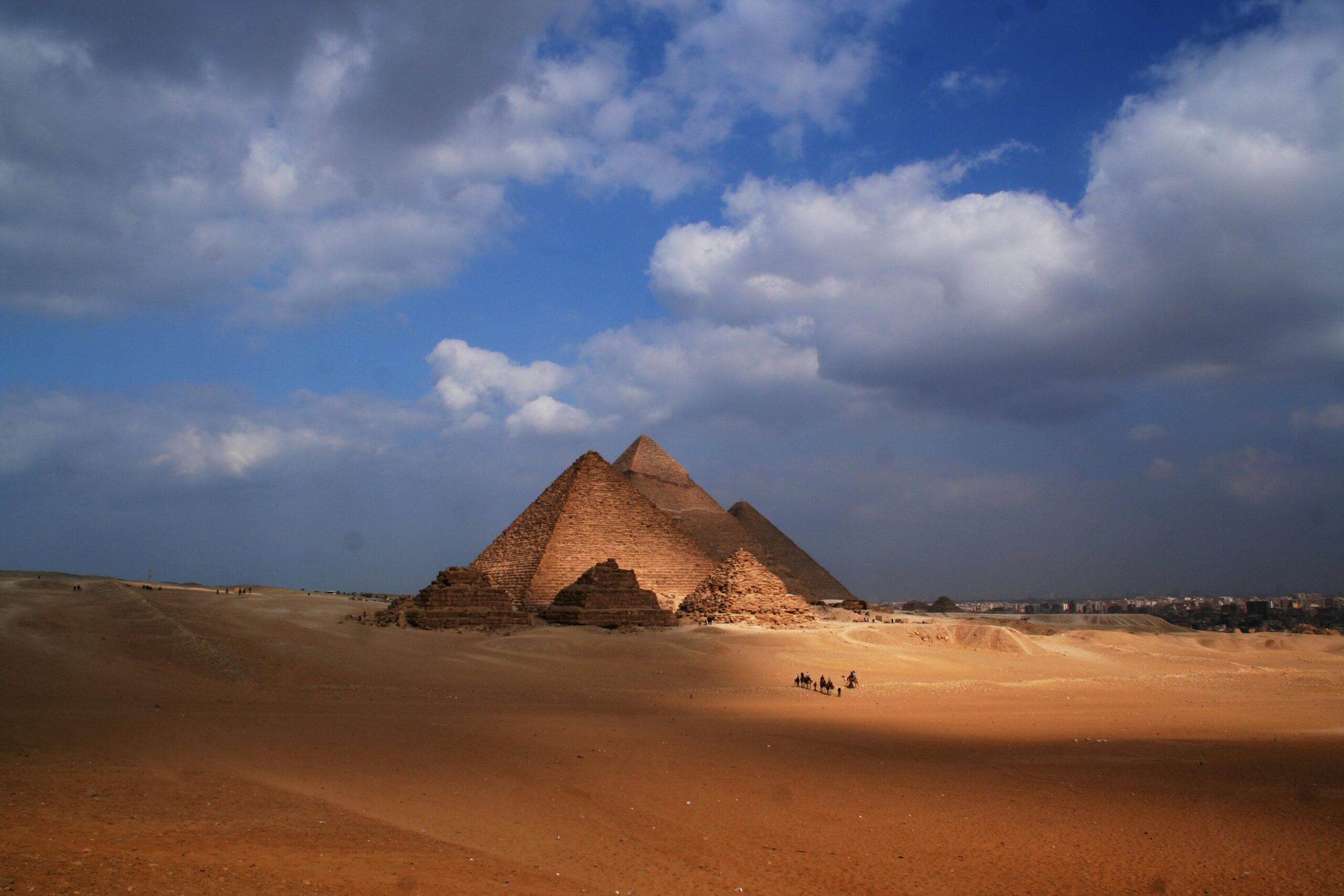As an affirmation of the ingenuity and skill of ancient Egyptian civilization, the Great Pyramids of Giza: Wonders of Ancient Engineering has been a source of fascination for historians, archaeologists, and tourists over the centuries. In this blog, we shall explore the history, construction techniques, cultural significance, and mystery that remains to this day surrounding the Great Pyramids.
Table of Contents
A Historical Overview
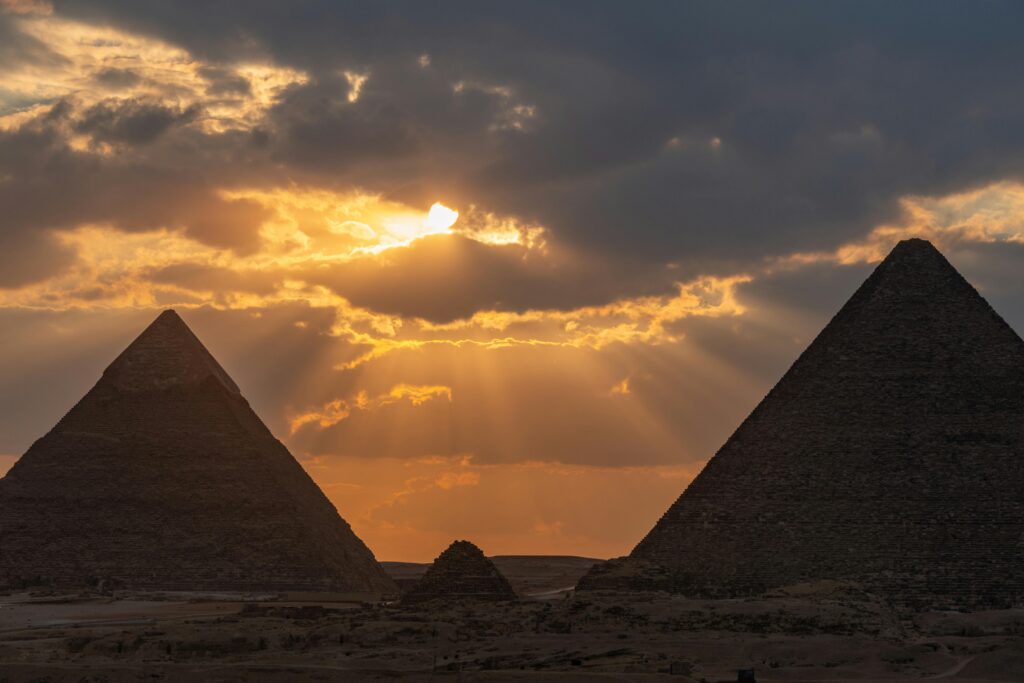
The Great Pyramids of Giza were built during the Fourth Dynasty of the Old Kingdom of Egypt, around 2580 to 2560 BCE. This period is generally regarded as the apex of pyramid construction, a reflection of the power and resources of the pharaohs.
The Pyramids of Giza
The Giza complex contains three main pyramids:
The Pyramid of Khufu (Cheops): It is the largest and oldest pyramid, which initially measured 146.6 meters or 481 feet, the tallest man-made structure for more than 3,800 years.
The Pyramid of Khafre (Chephren): This is slightly smaller as compared to Khufu’s pyramid yet keeps some of its original casing stones at the top, so it has a very unusual appearance.
The Pyramid of Menkaure: It is the smallest of the three and stands 65 meters in height, with a complex of smaller pyramids and mortuary temples.
Purpose of the Pyramids
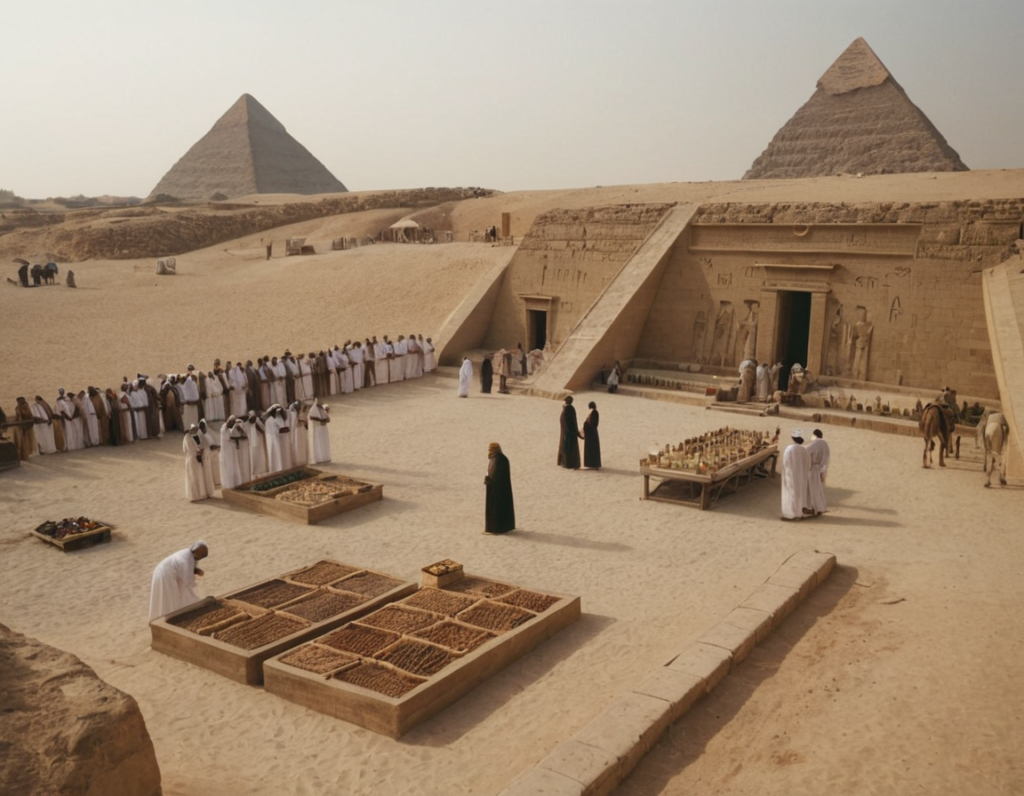
The Great Pyramids were used primarily as tombs to the pharaohs. The Egyptians believed in life after death, and the pyramid served as assistance to help the deceased pharaoh make his way into the next world.
Burial Practices
It has been in Elaborate rituals and grave goods, that included food, jewelry, and mundane objects, were believed to have to accompany the pharaohs into the afterlife. Often surrounding the pyramid were numerous mortuary temples and smaller tombs for nobles and family members.
Engineering Marvels
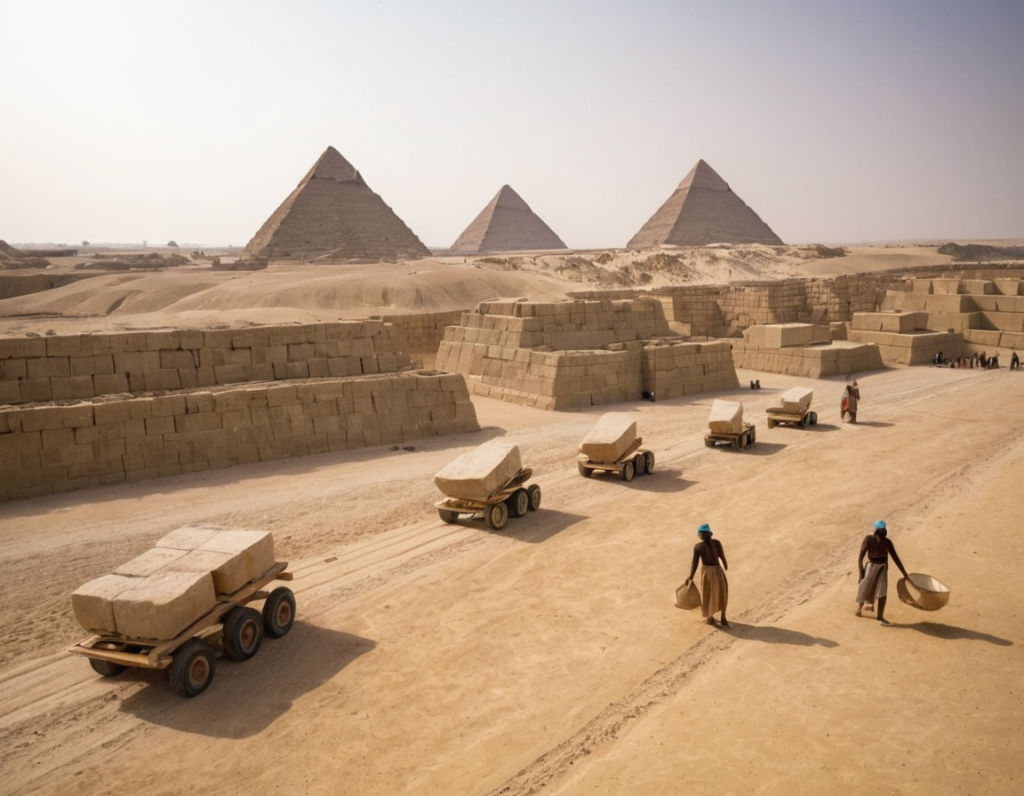
The Great Pyramids of Giza are magnificent structures that represent great engineering feats and architectural excellence. Construction techniques that have been employed in their construction have attracted much study and debate.
Construction Techniques
Although the exact methods by which the pyramids were constructed are unknown, several theories have been advanced:
Quarrying and Transporting Stones: The main construction material was limestone which was locally sourced. The blocks were pulled on sledge with water to decrease friction and dragged across the desert.
Ramp systems: A number of ramps are believed to have been used to reposition the massive stones in position, which could be either straight, zigzagging, or circular, to enable workers to pull the stones up to higher levels as the pyramid was rising.
Labor Force: Contrary to the myth that the pyramids were built by slaves, evidence shows that a skilled labor force of workers, possibly organized into crews, constructed the pyramids. These workers were probably well-fed and housed in nearby villages.
Precision and Alignment
The Great Pyramids are aligned with such precision that one is taken aback by this. The Pyramid of Khufu has a very near perfect alignment with true north, and it merely shows the capabilities in astronomy and geometry that were owned by the ancient Egyptians.
Cultural Significance
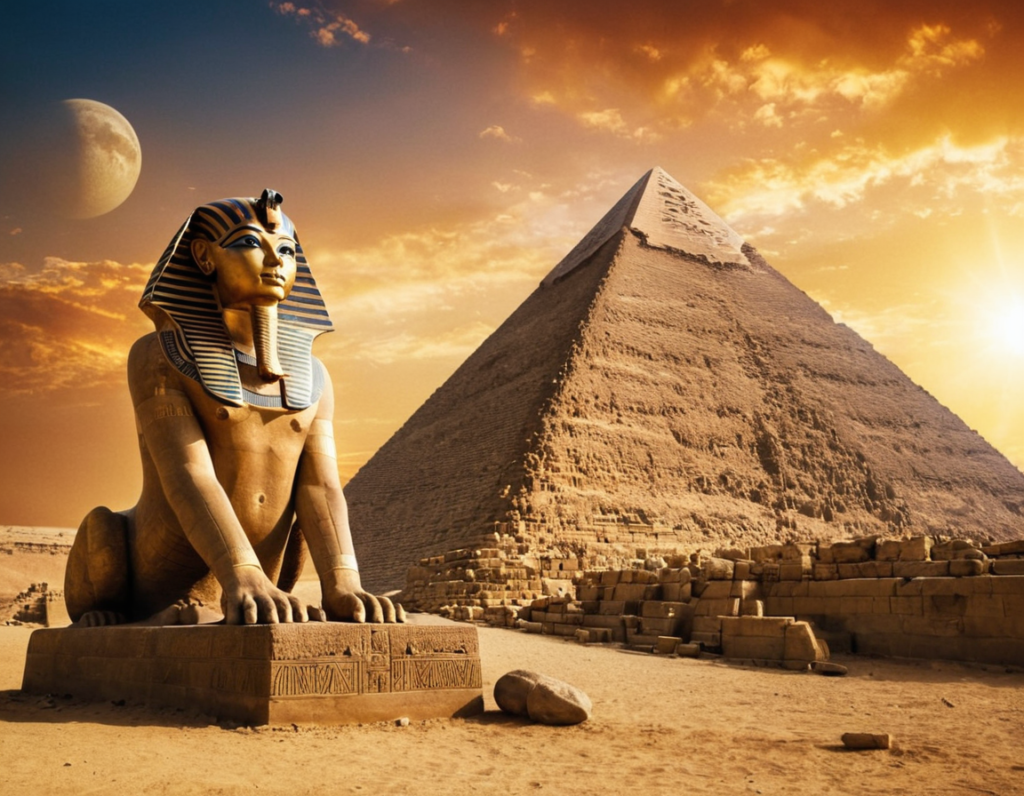
The Great Pyramids of Giza are, besides their engineering prowess, a representation of the ancient Egyptian culture and belief systems.
Power Symbol
Actually, the pyramids represented the might and influence of the pharaoh. These large buildings were only reflective of the resources and treasures which the class of government disposed over in abundance, reinforcing it in the position of mediation between gods and mortals.
Religious Beliefs
Ancient Egyptians believed that pyramids are an integral part of religious practice. The pyramid itself is supposed to symbolize sun rays, and it binds the pharaoh to the sun god Ra. This pyramid, in their opinion, was a key to a successful afterlife journey for the pharaoh, in which they did not destroy the cosmic order.
Lasting Enigmas
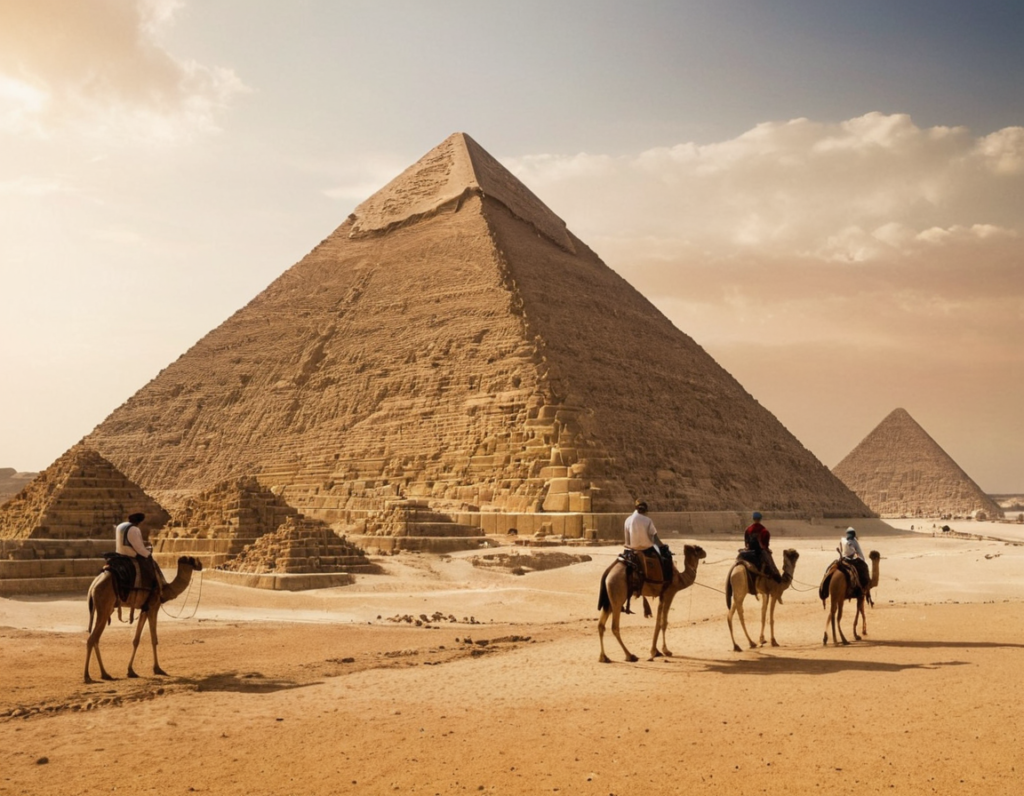
The Great Pyramids have proved very secretive despite extensive research. Many questions among scholars and enthusiasts remain unanswered about their construction and purpose.
The Missing Casing Stones
The original appearance of the pyramids was an intricate pattern of smooth, white Tura limestone casing stones reflecting the sun’s ray, making them shine. Most casing stones had been removed over the centuries, and many speculations about the appearance and purpose of the pyramids arose.
The Internal Layout
The internal setting of the pyramids, especially the pyramid of Khufu, remains an area of research. The intricate network of passages, chambers, and shafts has fascinated scholars, and thus further researches are being conducted through ground-penetrating radar and other advanced technologies.
The Pyramids Today
Today, the Great Pyramids of Giza stand as UNESCO World Heritage Sites and as one of the Seven Wonders of the Ancient World. Millions visit annually to this monument of grandeur and the feats of old Egypt.
Conservation Activities
There exists the preservative means with an aim of keeping pyramids from environmental deterioration as well as human intervention. The aim is to make such structures be available to different generations to enjoy as legacies of ancient Egyptian civilization.
Conclusion
The Great Pyramids of Giza are both a monumental testament to human genius, together with the cultural importance and mysterious appeal of wondrous ancient engineering. From their construction to the purposes of ancient Egyptian religion, these giant monuments captivate and involve all of humanity. All one needs to know more about such incredible structures is to understand the civilization behind them and the ageless mysteries they evoke.
What’s the most exciting thing that you know about the Great Pyramids? Do you have any theories or explanations in your head about what these were constructed for or why? Share your thoughts in the comments below!
